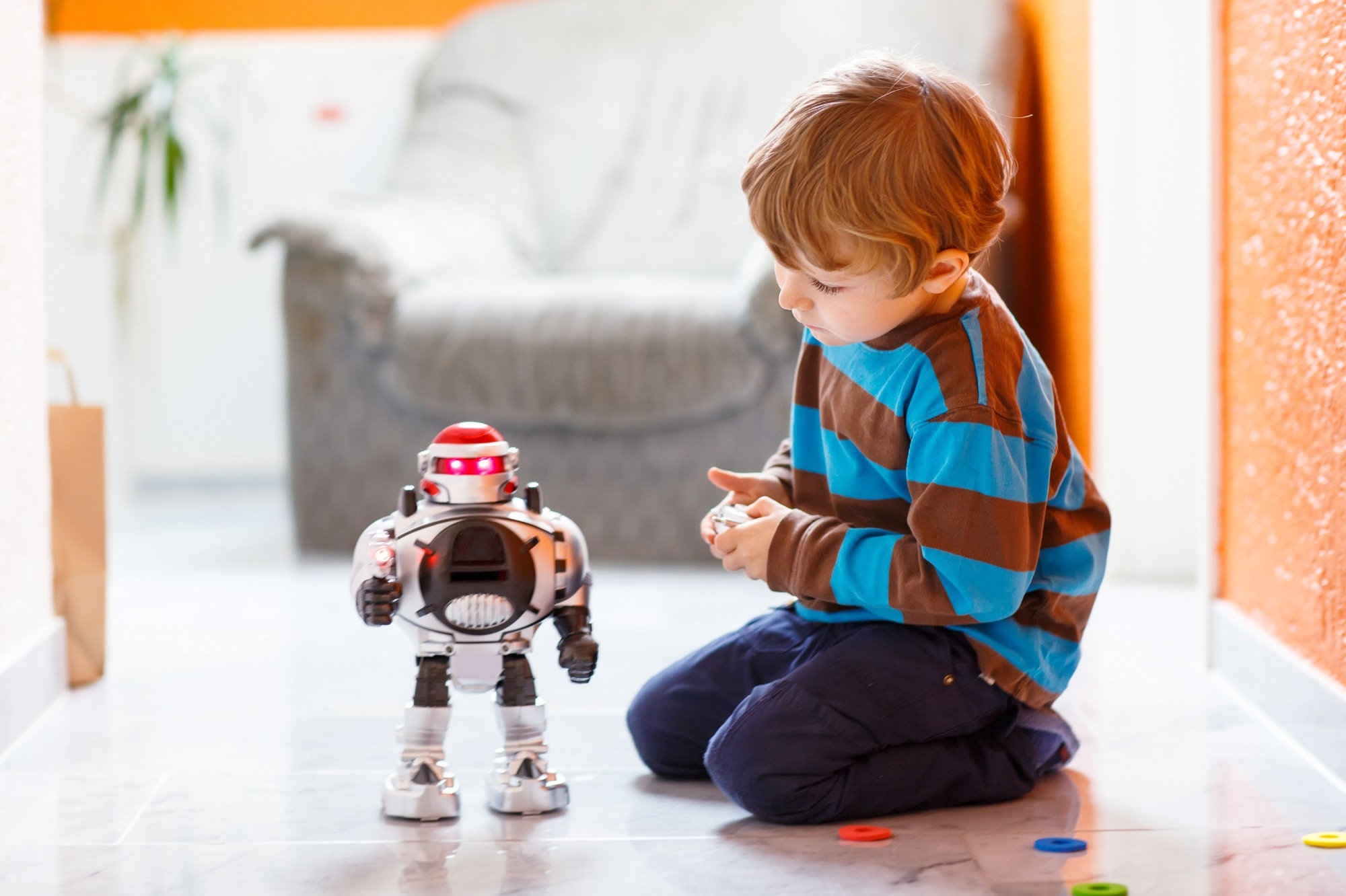In a recent review published in Behavioral Science, researchers summarized the current evidence regarding whether people with Autism Spectrum Disorder (ASD) find it easier to interact with robot partners than human partners.
They concluded that interacting with robots may be easier because they can provide motivation, and their behavior is easier to predict than that of humans.
 Study: People with Autism Spectrum Disorder Could Interact More Easily with a Robot than with a Human: Reasons and Limits. Image Credit: Irina Wilhauk/Shutterstock.com
Study: People with Autism Spectrum Disorder Could Interact More Easily with a Robot than with a Human: Reasons and Limits. Image Credit: Irina Wilhauk/Shutterstock.com
Background
People with ASD can have difficulties interacting and communicating with others and often find repetitive or restricted patterns of activities, interests, and behaviors comforting. These challenges affect their daily life and make social interactions stressful.
Socially assistive robots, programmed to facilitate social engagement, can help people with ASD grow their social and cognitive abilities, allowing them to initiate social contact more easily.
Results from some studies indicate that people with ASD may prefer interacting with robots over humans.
This review summarized the benefits individuals with ASD get from interacting with robots, whether they prefer them over humans, the possible reasons for this, and the challenges faced while interacting with robots.
Improvements in social interaction, communication, and specific behaviors
Studies have shown that children with ASD show more social behaviors when interacting with robots than humans, including joint attention, eye contact, activity engagement, collaborative play skills, verbal communication, imitation, and touch.
After interventions with robotic tools, children displayed improved social interaction skills with human partners as well as robots.
Other interventions aimed either to facilitate the development of appropriate and relevant behaviors or to reduce anxiety and maladaptive behaviors.
Appropriate behaviors included learning how to take turns, making non-verbal gestures, recognizing emotions, and regulating physical contact and touch.
Children with ASD appeared more interested in the robot but were as likely to learn how to take turns or make gestures from a robot as from a human.
Autistic children who received a robot-based intervention were better at recognizing happiness, sadness, fear, disgust, and anger, as well as more complex emotions like shame.
Robot interventions also reduced anxiety and repetitive behaviors, but studies that compared their efficacy to that of humans found conflicting results.
Preference for interacting with robots over humans
Studies suggest that when people with ASD encounter a robot, they are more likely to be engaged in the task than they would when faced with a human.
Unlike people with typical development (TD), people with ASD do not show a preference for humans over artificial objects. Also, distinct from people with TD, autistic people appear more likely to follow robot movements than human ones.
One study found that autistic adolescents were more likely to confide in a robot about embarrassing experiences than in a human.
Autistic adults showed similar responses to human and synthetic voices compared to neurotypical people with a marked preference for human voices.
A study on people with ASD between the ages of 17 and 25 found that they showed a higher willingness to receive interview training from a robot compared to a human. Their willingness was also negatively correlated with how human they described the robot as.
Robots could be better motivators than people – or easier to predict and understand
Individuals with ASD may be less likely to orient themselves toward social information since they do not pay as much attention to social information, engage as much with social learning, and do not look at people as much.
People with ASD are less motivated by social rewards and are less likely to use greeting and farewell gestures than neurotypical people.
Thus, one hypothesis for why autistic people show more improvements when interacting with robots is that robots are more motivating than humans.
However, another suggests that since robots can be considered simplified social agents, they are less complex to engage with than humans and are, therefore, less intimidating.
To people with ASD, they may represent an intermediate stage of difficulty, which prepares them to interact more easily with other humans. Their behavior may also be easier to predict.
Conclusions
Overall, there is promising evidence of the benefits of robotic interventions for people with ASD.
The authors noted high inter-individual variability in how effective the use of robots may be, including between people of different genders, ages, and cultures or with different levels of cognitive functioning, language skills, and sensory preferences. This points to the lack of generalizability of results and the need for further study.
The studies included in the review used a variety of interventions and robot tools; many did not include a human control group to the group that received a robotic intervention.
Future studies should also explore how long the benefits of robots last after the intervention is concluded, though there are indications that the effect may persist in the long term. Using standardized measurement tools and sample selection may allow for stronger conclusions.